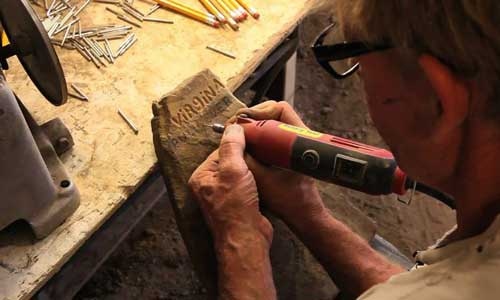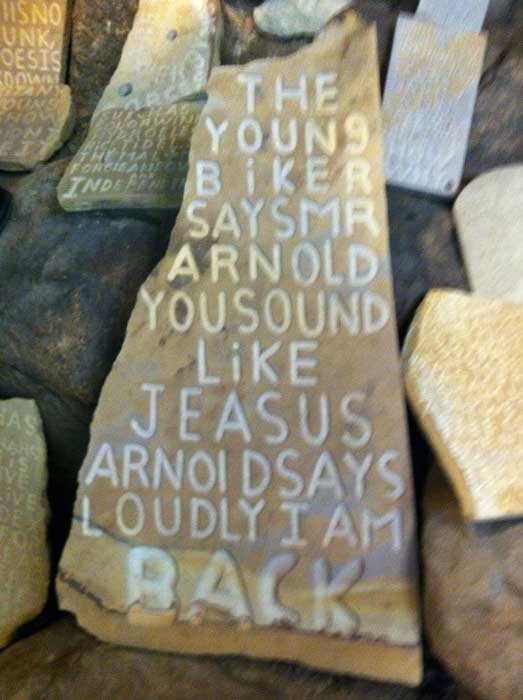When Cinema Professor David Bussan ’81 began filming his documentary about gay outsider artist Charlie Van Ness in 2006, the plan was to demonstrate Charlie’s work through a scheduled gallery show. Then, Charlie destroyed all of his art — no more gallery show. It took Bussan eight years to discover what the film would really be about.
“The Gospel According to Charlie” documents Charlie’s personal transformation as he grapples with the intent of his artistic expressions and the purpose of his life. It traces his journey as he builds whimsical sculptures out of fiberglass and resin, creates installation art and carves mythical stories into hundreds of stone tablets.
“The story is not about the art,” said Bussan. “It’s about Charlie and his journey of being an artist and what it means to be an artist and not be a part of an art community.”
While most of Bussan’s works are short experimental films, this documentary, which premiered at the Athens Film Festival in April 2015 and is scheduled to play at ten festivals, aligns with his interest in approaching subjects in an artistic manner. One way he achieved this was through the decision to blur the separation between camera and subject.
“When you’re making films like this, you’re told you don’t want to get involved with your character. But it becomes too difficult. There was no way I wasn’t going to get close to the subject. I’m not sure that complete objectivity is a plus in all documentaries.”
Co-producer, co-writer and editor Tim Raycroft ’89, wanted to incorporate Bussan in the film and suggested that Bussan narrate it and provide observational commentary.
Raycroft was not the only Denison alumnae who helped with the production of the documentary. Craig Harman ’02 and Jon Ulmer ’93 worked on camera and sound; Spencer Brooks ’97 provided photography and lenses; Ernie Pouttu ’11 and Logan Floyd ’16 were additional cameramen; Joel Husenits ’95 provided original music; Ori Segev ’14 helped with title animation and credits; and Brett Reiter ’14 provided transcription.
And, Bussan’s professor and academic advisor during his time at Denison, Julie Mulroy, is one of Charlie’s best friends. “It is the most compassionate and clear-eyed view of Charlie,” she said.
When Bussan presented the finished film to Charlie for the first time, Mulroy was present. “We watched the film together. Dave was nervous what Charlie would think. We were all scared to laugh,” she started. “Then Charlie started to laugh and continued to laugh in all the right places. A lot of his past eight years he has been struggling with religion and Dave captures that perfectly.”
The documentary raises, illustrates and answers profound questions: “How can Charlie’s evolution as an artist be explained? What demons drive him to destroy over thirty years worth of his artistic output?”
As Bussan says at the end of the film, “Relationships don’t necessarily change people in profound ways. Sometimes, it’s just nice to be around for the ride.”









